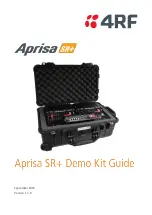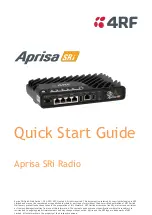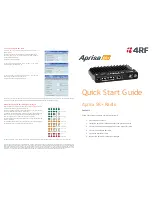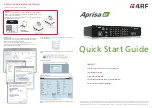
WSM6 Manual
Document Ref: UM-8270-000
Issue: A Rev 0
Section 3
October 2011
17
3.4
Battery Charging Description
The WSM6 is fitted with a 2000mAh Nickel Metal Hydride battery pack, which must only be charged
with the Sonardyne Type 7972-000-04 comms/charger unit and matching charger PSU. Earlier
types of transponder have different battery pack capacity, different rating A.C. power packs and
different versions of charger, which are NOT compatible with the WSM6.
A flat battery will charge for approximately 4 to 6 hours at the full rate of 500mA, during which the
red Fast Charge LED will illuminate. The charging current is applied to pin 3 of the external
connector (zero volts is pin 2). This charge time is considerably longer than the one-hour charge of
the SSM. This is due to the use of higher capacity NiMH cells in the WSM6, which cannot be
charged at such a high rate as the lower capacity cells in the SSM.
The charging current is controlled by electronics inside the transponder. When the battery reaches
a full charge the charging current is switched off, and the Fast Charge LED will switch off.
However, the charger also permanently supplies External Power to the unit (28V, 85mA on pin 4)
which will trickle charge the unit, and the yellow Trickle charge LED will illuminate. It is safe to leave
the trickle charge connected indefinitely.
Special care must be taken if the battery has been allowed to become deeply discharged. In this
state it is possible for some cells to drop to near-zero voltage or even reverse the voltage on their
terminals. The WSM6 should always be switched off when not in use to minimise the chance of
entering this deep discharge state.
Once a cell has become deeply discharged, its capacity is reduced. This has the effect of
unbalancing the pack and therefore reduces the pack capacity. Usually the pack can be recovered
by following the procedure below. If not, then recovery can only be achieved by removing the pack
and subjecting it to several slow (200 mA) charge/discharge cycles. Even then the full capacity may
not be recovered.
Charging a pack which has suffered deep discharge can result in some gas being discharged by
the affected cells. If the pressure relief vent is found to be proud of its normal position, this may be
an indication that one or more cells have gassed and the appropriate action should be taken to
recover the battery pack as described above.
A Pressure Relief Vent Valve is provided to make sure there is no build-up of gas inside the
transponder caused by the charging process. The battery manufacturer recommends the batteries
are charged in an open environment. However, they also specify that no gas is vented by the
batteries, providing the recommended charging procedures are followed. The WSM6 includes
special circuitry to monitor the battery pack during charging. This safety feature makes sure the
battery cannot be overcharged in normal use. For this reason it is not deemed necessary to remove
the Pressure Relief Vent Valve during charging of a fully operational instrument.
Should there be any reason
to suspect that there is pressure inside the unit, or that the charging
circuitry may be faulty, it is recommended the Pressure Relief Vent Valve is extracted prior to
charging. Use an M3 bolt to give purchase and carefully withdraw the vent plug.
Keep well clear
of the transponder end-cap while withdrawing the vent and do not stand in line
with the transponder axis. Toxic gasses or corrosive liquids may be forcibly expelled in the event of
serious battery failure. There is a retaining device to prevent loss of the plug and later instruments
are fitted with a spring to re-seal the vent once pressure has been released. Take care to avoid dirt
contaminating the ‘O’ ring seals on the plug or entering the hole in the end-cap.
















































